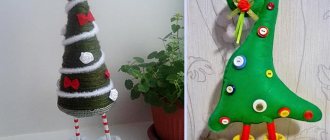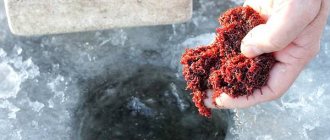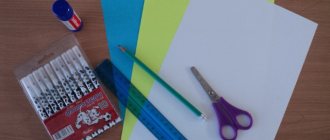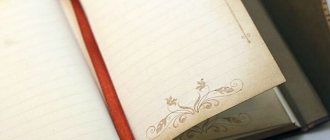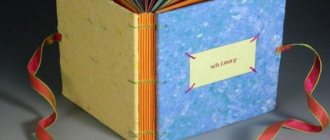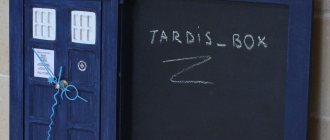Fishing is a long process and, of course, the question arises: how to preserve the caught fish, so that it also remains fresh? Well, the most obvious option is a fish tank, although this option is not ideal for fishing on a boat - the fish tank makes it difficult to move from place to place and will force you to take it into the boat. Another thing is kukan: even if you don’t have a cage with you, you can make this equipment for hunting with your own hands.
Kukan Vinogradova
Making a Vinogradov's kukan with your own hands is also of interest to many fishermen, since this device is intended for underwater hunting. You will need to get a metal needle, which can be made from a tube with a diameter of about 10 millimeters. The tube must be cut at an angle and treated with sandpaper.
Now you will need to find a thick nylon cord or get a cable wrapped in braid. It is much easier to put fish on a line. Typically, the length of the cable is selected within one meter, depending on the number of fish caught. In addition to the cable, you also need to purchase glue and two nails. The tools are very simple, all you need is a file, a hammer and a vice.
Making Vinogradov’s kukan with your own hands is quite simple; you just need to adhere to certain recommendations and follow a clear sequence of actions:
- Take the cable and solder the ends of the insulation on a gas stove or with a lighter.
- The sealed ends need to be generously coated with glue so that they take a smooth shape and wait until completely dry.
- Now you need to take a needle and drill holes in it, one about 20 millimeters from the edge (which is not cut at an angle), the second 20 millimeters from it. The diameter of the holes depends on the thickness of the selected cable.
- Now you need to insert about 10 centimeters of the cable inside and hammer the nails into the holes. The sharp ends of the nails must be cut off.
- The second end of the cable must be formed into a loop and all burrs removed with a file.
Work process
To make a kukan, you need to fasten the thread to the needle. To do this, perform the following steps:
- We melt the ends of the thread with a lighter.
- We crimp the polyethylene ends with our fingers or place them in glue and wait for them to dry to hide the exposed metal.
- We clamp the needle in a vice.
- We drill two through holes with a drill. One is at a distance of two centimeters from the non-sharp end of the tube, the other is another 2-3 cm from the first.
- We stretch 7–8 cm of thread through the holes of the tube.
- We take two nails, which are used to hammer in glazing beads to strengthen the glass in the window frame.
- We use nails to punch the cable through the holes. You can pre-lubricate them with waterproof glue.
- We bite off the head and sharp end of the nails, adjusting them to the diameter of the tube.
- Use a hammer to crush the body of the nails so that they are firmly rooted in the holes.
- We clean out the irregularities in the joint with a file or sandpaper.
Spare parts for creating a kukan
The resulting homemade kukan still needs to be somehow secured to the belt. At the other end of the thread, a loop is made of wire about 2 cm long. By hanging a carabiner on your belt, you can easily hook the kukan you made yourself.
Recommendations for the use of kukan
Using a homemade kukan is a very simple task, as is its manufacture. But not everyone knows how to store fish impaled on it. If certain rules are not followed, you can simply injure the caught fish and it will not live long.
Follow the recommendations provided to maximize the life of your catch and avoid injury to the fish:
- When fishing for pike, it often happens that it swallows the tee deeply and safe removal is simply impossible; most often this happens when the fish xxl bite activator is used while fishing. It is best to disconnect the hook from the bait and place the predator on the kukan along with it. So she will live about 4 hours.
- After hooking, the fish will still be active for several hours. When catching several trophy specimens, you should not put them on one tackle and drag them behind the boat while moving around the reservoir. It is better to secure the kukan away from the fishing spot so that the prey does not scare away other fish.
- Planting fish must be done very carefully. You need to be especially careful when mounting a pike, since in addition to teeth on its jaw, it also has small spines on its upper palate. If you don't watch your fingers, the fish may simply bite you, which is not very pleasant.
As you can see, building a fish kukan with your own hands is not such a difficult task, which will take no more than an hour of time. But, regardless of whether you bought the tackle or made it yourself, you need to adhere to the general recommendations for hooking and transporting fish.
Fishing
For many beginners in spinning fishing, the important thing is how to pull the pike in such a way as to minimize the likelihood of it coming off. It's really simple. It is enough to remember one simple rule - the fishing line or cord must be in tension all the time. Then the toothy predator will not be able to free itself from the hooks. This is achieved by the coordinated work of the rod and the friction brake of the reel. The spinning rod is smoothly raised up, and upon reaching a vertical position, it is lowered while simultaneously reeling in the fishing line using a reel, while preventing the formation of slack.
Depending on the size of the fish and the gear used, difficulties may arise when fishing.
You need to be careful, tension must be maintained constantly. If there is no resistance, this may mean that the pike has gone straight towards the angler. In this case, you need to rewind the fishing line as quickly as possible to restore its tension.
Given the light weight of the pike, there is no point in being particularly hard on it - forced fishing is the best option. The predator simply won’t have time to try to escape into the thicket of reeds or grass, and will quickly end up on the kukan.
The struggle with reaching the candle can be problematic in cases where a large-sized pike is caught on ultralight tackle. Standard methods of dealing with such a situation can lead to breakage of an ultra-light form, so it is recommended to give some slack if such a maneuver is suspected. A light bait will most likely not fly out of the pike’s mouth.
Among the main reasons for the gatherings are:
- A weak hook, in which the hooks simply do not penetrate the hard and bony mouth of the toothy predator.
- The main mistake in fishing is weakening the fishing line. In this case, the probability of a collapse is extremely high. The pike may spit out the bait or bite the line above the leash.
- Low quality of the metal from which the hooks are made (they can bend or break even when fishing for relatively small pikes).
- Dull hooks also often cause ineffective hooking. It is necessary to change them promptly on all baits.
- Active maneuvers of the pike also lead to disappearances - going out onto a candle or trying to escape into snags or thickets of algae.
- Fishing line getting into the mouth.
You should also pay attention to the fact that when “pumping out” a large fish, you cannot put the spinning rod behind your back, since the rod will most likely not withstand such a load. Failure to follow the fishing rules will result in the prey being torn off the hook.
Failure to follow the fishing rules will result in the prey being torn off the hook.
What is kukan
A fisherman who has caught a fish is faced with the question of how to deliver the caught fish fresh to his home. Fishing can last for many hours, during which time the fish will have time to spoil. The best way to preserve caught fish is to keep them alive in the aquatic environment. Kukan is one of the devices that allows you to do this.
When a fisherman catches fish, he needs to think about how to get it home fresh. Fishing can last for many hours. In this case, the fish caught at the beginning must be preserved throughout this time. An effective solution to this problem is to preserve the trophies alive in the aquatic environment. Kukan is a device that helps to do this.
Kukan is a special device for storing caught fish in water. Kukan allows you to keep fish alive for a long time and allows the fisherman to bring the caught fish home in fresh condition.
Kukan consists of a synthetic cord or metal cable with metal or plastic fasteners suspended on it for the caught fish. Fish fasteners are most often made from durable stainless wire. At the end of the cord or cable there is a carabiner or loop for securing the cucan. The end of the kukan is secured on the shore by a peg stuck into the bank or by a branch of a tree or bush growing on the shore.
The caught fish, after being removed from the hook, is transferred to the kukan. The fastener of the kukan is passed through the fish's mouth, then brought out under the gill cover, the fastener is snapped so that the fish does not break loose and escape.
When immersing a kukan with fish in water, you need to choose the right place for this. It is better to keep the kukan with fish in the shade, in a place with running, oxygenated water. It is advisable for the fish to be in the lower, deeper layer of water, then it will stay alive longer. To do this, a weight is tied to the lower end of the kukan.
When there are several fish on the kukan, it is better to keep it away from the fishing spot, otherwise the noise and fuss of the fish placed on the kukan will scare away the other fish around the fishing spot.
In autumn, in cool water, fish caught and placed on a kukan can remain alive for 1-2 days.
Kukan can be used for spinning fishing from a boat. The end of the kukan is tied to the oarlock. You need to tie the kukan on the side of the boat from which you will not be casting.
Kukan is convenient for spinning and fly fishing. In this case, the end of the kukan is tied to the branches of a bush on the shore or by a belt on the angler’s belt.
Kukan is used by underwater hunters; they most often attach the kukan to their belt.
Do-it-yourself kukan - step-by-step description of how to make a reliable and inexpensive kukan (110 photos and videos)
One of the most pressing problems in fishing is how to keep the caught fish fresh. The most famous and common option is a cage.
However, this option has significant drawbacks. The first and main one is creating interference when moving the boat. Because of this, while moving, the cage has to be pulled out and stored at the bottom of the boat.
Another significant drawback is that large fish may not fit in the cage or, when placed there, may cause damage to the fish located there.
The use of kukan fundamentally solves the problem of preserving the catch, and it is always possible to make kukan with your own hands.
Brief contents of the review:
Kukan for spearfishing
When a fisherman stocks up with devices for preserving fish: a kukan, a cage or others, he can calmly fish without worrying about the future fate of the fish. When spearfishing, there are much fewer opportunities. However, in this case, it is possible to use the kukan.
In order to explain why it is needed, it makes sense to imagine what will happen if an underwater hunter does not have such a device at his disposal. Having hit a fish with a harpoon, he will have to return to the shore with the prey, ensure its safety, and only then go hunting for the next fish again.
However, using a kukan eliminates this need. It allows you to keep your prey with you and continue hunting. Although it is not as important as a speargun, its use nevertheless makes the hunting process much more comfortable.
How to make kukan with your own hands:
There are two options for mounting this device. The first is the use of a buoy. It is located on the surface of the water nearby and all the caught fish are attached to it.
Another option is to attach it to your belt. This makes the hunter more independent. But at the same time it creates the need to constantly drag the caught fish along with you.
When using kukan, you need to remember that it cannot be used for bream, ide and some other fish. The fact is that their lip or gills can easily rupture, and the fish will fall off the hook and die. It is beneficial to use this device when hunting predatory fish: eel, pike, catfish and others. These fish stay firmly on the kukan.
This device consists of the following components:
- There is a mount that holds the kukan with fish.
- A stainless steel metal needle is used. It is needed to pierce the caught fish.
- A cable is used on which the prey is attached.
There are several designs of homemade kukans.
The simplest of them looks like this. Instead of a needle, a thin metal pin is used, to the middle of which a cord is tied. At the other end of the flexible element there is a loop with which the kukan is attached to the belt. After the fish is caught. The hunter pierces her with a metal part. He threads it all the way through and continues hunting. At the same time, the prey swims behind it, clinging to various objects.
Sometimes kukans are used in the form of a fine mesh. Its edges are made in such a way that it can be wrapped around the body and put prey in the net like in a pocket. This method is convenient in its own way, but it cannot be used if large and heavy fish are caught.
Modern kukans use braided wire as a flexible element. The needle is attached to one end, and the fish cannot slip off it because the design has a folding pin that prevents this. If the fish is too active, then it is enough to pierce the cerebellum with a needle so that it stops struggling.
A special fastener is used for attachment. It looks like this.
You can make a kukan for spearfishing with your own hands. First you need to make a needle. It is recommended to use stainless steel or aluminum as the material for manufacturing. To do this, it is convenient to use a tube no less than 12 and no more than 16 cm long. If such a part is not found at home, it is not difficult to find it in a car store. One side is filed with a file at an acute angle and carefully cleaned with sandpaper so that no burrs remain.
At the blunt end, two holes are drilled at a distance of 2 and 4 cm from the edge.
It is convenient to use a laundry cord as a flexible element, which is made in the form of a flexible metal cable located in a plastic sheath. After the desired piece is cut, the polyethylene is sealed at the ends. This can be done conveniently with a lighter.
The cable is inserted into the tube from the blunt end, and in the places where holes are made they are pierced with nails. The protruding ends are bitten off and the edges are flattened with a hammer. Then they are carefully cleaned with a file.
A loop for attaching to a belt can be made in this way. From the tube from which the needle is made. Cut a ring 4 mm thick, thread the cord 10 cm, then wrap it and thread it again into the ring, which must be flattened with a hammer.
To store the needle, you can use a rubber tube of a suitable size.
How to do it yourself?
If you did not plan to purchase a pike kukan in the store, then you can create it yourself. First you need to prepare all the materials necessary for this:
- metal cables (2 and 3 millimeters in diameter, you can use old knitting needles instead);
- metal clamps;
- plastic or rubber tube (diameter 3 millimeters);
- two carabiners that will be used to attach the gear to the cord or to the boat;
- swivels;
- additional small carabiners for attaching hooks to a metal base.
First you will need to take the cable and cut off a small part from it, it will act as a base for the product. The length will largely depend on the number of loops. Remember that the distance between them should be at least 15-20 centimeters.
Later, a small loop is formed at one end of such a segment. You can form it using a clamp. Then you need to put the swivels on the base; the fish loops will then be attached to them.
Small pieces of plastic tube should be placed between these parts; their length should be in the range from 15 to 20 centimeters. Due to them, the loops will be placed at the optimal distance from each other and will not get tangled.
When the swivels are fixed to the base, using the clamp you need to form a loop necessary for attaching the carabiner to the second end of the cable.
To create hooks, the cables are cut and small loops are made at their ends using a clamp. The resulting elements are secured with a carabiner to the swivels. After this, the product for pike will be ready, all that remains is to prepare a strong cord made of nylon material, with which it will be attached to a rubber boat or to a stake.
If you took knitting needles for the base, then the manufacturing process will be the same, but it is better to select thinner devices. And also there will be no need to cut the product into separate parts, since the whole knitting needle will act as the basis for the kukan.
In the process of making a homemade kukan, it is necessary to remember that such fishing tackle should be equipped with the most reliable and convenient fastening so that it does not accidentally fly off the boat, and after collecting the caught prey from it, it is recommended to immediately thoroughly rinse and dry this entire structure, so that on metal There was no corrosion on the parts.
Making kukan for fishing
There are several options for preserving fish so that it does not spoil. The first solution is a cage, but this option is not convenient for boat fishing, because it is not easy to swim to a new place with it. The second solution is a kukan, which can be made from available materials.
What is kukan for fish?
Kukan
(translated from English Fish Stringer) is a device for storing and moving catch. After fishing for a large fish, it is placed on a kukan.
In simple terms, a kukan is a thick cord with a thick wire loop at the end.
How to bait a pike on a kukan
To mount a pike, you first need to hold it from above by the eye sockets, immerse your thumb and forefinger in them, and pierce both jaws of the fish from top to bottom with the rod of the kukan 2 times.
Kukan is a device that should be in every fisherman’s arsenal.
What you need to prepare for work
- a cable with a diameter of 2 or 3 mm of at least 5 m, most of it (5 parts of 0.7 m each) will be used for loops;
- cable clamps - 12 pieces;
- 2 large carabiners for the ends of the cable, and 7 smaller ones for the loops;
- plastic tubes 20 cm, 4 pieces;
- 5 swivels - small devices to avoid twisting.
You will also need wire cutters for cutting through metal, a tape measure and a hammer.
The process of making a kukan for pike
Cut the cable into 5 pieces of 70 cm each. There should be 1 long piece of 1.5 m. You need to put on it: a swivel, then a tube, then 4 devices to avoid twisting, and the final fifth closes the entire chain.
Attach large carabiners to the edges of the cable with clips. And put the small ones, 2 pieces each, on the free edges of the swivels.
Make loops from the remains of the cable and secure the edges with clamps. You can make a strong setting using a hammer. Attach the loops to the carabiners. The device is ready.
Kukan from a knitting needle
You can make a device from a knitting needle. To do this you will need:
- metal cable, chain or nylon cord;
- a bicycle spoke or an equally strong wire;
- plastic separator tubes;
- carbines;
- end sinker.
First, attach the weight fastening to the end of the main cord with a carabiner on the outermost link.
Place the tubes and carabiners on the lace in order. The tubes must be selected according to the diameter of the cord. If it is a chain, the carabiners are attached through a specific number of links. The length depends on the planned catch: for catfish - up to 20 cm, for pike or pike perch - 7 or 10 cm.
A loop is made at the upper end, the end of which is threaded into a carabiner and secured to the shore or vehicle.
Kukan with float
Kukan with a float is a device for storing and carrying the caught catch. A float is necessary to prevent the structure from accidentally sinking. If this happens, the device will be visible, and thanks to it you can easily remove the kukan from the water.
Practical advice
A homemade kukan can be attached to pegs installed on the shore, or using a boat or fishing equipment. The whole technology of using a kukan comes down to passing the carbine through a slit cut at the fish’s jaw or through a gill slit. Thus, you let the fish float in the water until the moment when you decide to collect the entire catch.
Ease of use can be improved with a few simple steps:
- to quickly remove the fish from the kukan, make sure that the edge of the cable, which is in the loop, is in normal contact with the thread of the kukan;
- sometimes the fish is strong enough to get off the hook on its own, and to avoid this it is enough to attach an additional wire bracket to the top of the needle;
- At the end of the cable, you can make a small loop of wire so that the device is well attached to the fisherman’s belt.
We hope that our master class on making kukan will be the key to your successful fishing!
Manufacturing
If all the necessary components and devices are prepared, you can proceed directly to making the kukan. If you have not encountered such work before, then it makes sense to rely on detailed step-by-step instructions for creating the fishing accessory in question.
- First you need to divide the cable of a suitable length into 6 separate sections. One of them should have a length of 1.5 m. This segment will correspond to the length parameter of the kukan itself. The remaining 5 segments, each 0.7 m long, must be left for further production of loops.
- You need to take a cable, the length of which is 1.5 m. You will need to carefully put plastic or rubber tubes on it, depending on which one you have chosen for the work.
- Next, you will need to properly secure large carabiners at the ends of the cable section. This can be done using special clamps.
- You should still have small carabiners. They will need to be installed on swivels.
- From 5 cut pieces of cable, each 0.7 m long, you will need to build strong loops. It is these components that will be responsible for the reliable retention of fish caught in the reservoir. The hinges will definitely need to be secured using reliable clamps. To make the final and most powerful clamp, you should use a hammer.
- Do-it-yourself strong and securely installed loops will need to be attached to carabiners. The latter will need to be pre-installed on the main cable.
Once collected in this simplest way, you can safely use the kukan and go fishing with it. This homemade device is suitable for catching a wide variety of fish. Thus, many fishermen make kukan for catfish, carp, pike, pike perch, asp and other types of fish.
The described method of making kukan yourself is not the only one. Different fishermen use different methods. For example, it is more convenient for someone to knit this device from soft rope, knitting needles and other available materials.
How to deal with a large pike in a boat
In the boat, do not let go of the pike and do not give it freedom. Otherwise, she will arrange such a “revolution” for you there that you will then have to calm her down for a long time. If you decide to release the pike back, hold it firmly and gently behind your head. Take photos, weigh and release. Don't hesitate. Remember that every second of the pike in the air is an additional injury for it.
If you decide to take the pike with you, for frying or for cutlets, euthanize it. For small pike, the backbone is broken just behind the head. With a large pike, such a trick will not work. Take a knife and place its tip on the ridge of the pike just behind the head. Drive the tip into the pike's spine with a strong blow to the shank of the knife. The knife will sever her spinal cord, entering between the vertebrae. The pike will calm down quickly and will not bother you much. Do not place large live pike in a bag or barrel. Pike live in mucus for quite a long time. Firstly, it will beat, make noise and disturb you in every possible way. And secondly, this is a rather painful death. Show respect to the big fish - it gave you pleasure in the process of catching it.
(c) Andrey Yantsev. 2013.
PS. Here's a YouTube video of a pike being hit with an oar in an attempt to stun it. Please NEVER DO THIS!!!
Varieties
Let us list the main types of kukan designs.
- The simplest kukan is based on a thin metal cord, to one side of which a short knitting needle is attached, and a loop is made from the other end; it is the latter that is inserted under the gills, after which it is tightened on a knitting needle;
- A nylon cord can be used as a base, onto which wire loops are placed, in which case we can talk about a wire-thread kukan; Such products must be dried after each use, and the downside is the possibility of the fish biting the cord and leaving the fisherman, right with the hook attached;
- A triangular kukan is made from a long metal knitting needle, which is bent to give it a triangular shape; after bending, fasteners are threaded onto the knitting needle, and the top can either be soldered or wrapped in the manner of a fastener; the advantage of this option is the possibility of greater immersion of caught fish, which leads to longer storage;
- Round-shaped kukans are rings onto which previously bent steel hook-and-loop clasps are placed; the ring is sealed, and the kukan can be secured using a rope or a thin chain;
- Kukan can also be one large metal clasp; it is made from fairly thick (3-4 mm) steel wire, which is bent to form a U shape; then one edge is bent at a right angle, and on the other a loop is made, at the end of which there is a hook that acts as a fastener.
The need to attach a swivel to a carabiner
The purpose of the swivel is to combat line twisting. At the same time, this can be an extra element of equipment, which will add heaviness to the overall structure and make it more noticeable in the water.
Experienced fishermen are inclined to believe that swivels should be attached to a carabiner only when using spinners and such universal baits for predators as Devon. The peculiarity of these types of artificial baits is that they have a strong axial rotation, which makes the line super twisty.
What tools are needed to make kukan?
It is difficult to recommend any specific tools, because each person may prefer to use different tools to create kukan. But here is a list of the tools that you will obviously need:
- Wire cutters. Needed for cutting cable or wire.
- Chisel. Also serves to cut the cable (when it is large in diameter).
- Roulette. In order for the kukan to turn out to be of really high quality, it is advisable to maintain certain dimensions; this is exactly what this tool will be needed for.
- Pliers. Required for fastening clamps on hinges.
- Hammer. Will be needed throughout the entire manufacturing procedure.
How to make kukan?
Step 1. First of all, take a reliable cable 6 meters long and with a diameter of 0.3 - 0.5 mm. Next, it is cut into pieces, the largest of which will serve as the basis of the tackle (2 meters). And from the remaining 8 parts loops will be made (each 50 cm). Step 2. Previously prepared swivels and tubes are put on the main cable
It is important that their diameter is slightly larger than the diameter of the cable. They must alternate in the correct order: first the swivel is put on, and then the tube
Thus, the tackle will require 8 swivels and 7 tubes. Step 3: Once the swivels and tubes are in place, loops are made at both ends of the cable using aluminum clips and large carabiners are placed on them. Thanks to two large carabiners, the kukan clings to the place the fisherman needs. Step 4. Preparing the loops will not take much time. You will need to make 8 loops, using a hammer and clamps to secure them tightly. The fish will subsequently be threaded onto the loops. Step 5. 8 small carabiners are attached to the previously prepared swivels, and loops are already put on them. This way, taking off and putting on the fish will be convenient and easy.
As you can see, the procedure for creating a kukan with your own hands is not so complicated. The only thing you need is the necessary parts, tools and a little ingenuity.
When making, you can use completely different sizes, based on how much fish you plan to catch, what size this fish will be, etc.
Also, instead of loops, homemade hooks made from strong wire or a bicycle spoke can be used. The knitting needle is bent into a horseshoe shape. After this, a small loop is made almost at the very end of the knitting needle, and the end itself is bent so as to form a hook. The second end is bent at 45°. Ultimately, we get a hook with a loop, as well as an opening and closing mechanism. Using a loop, it is attached to the swivel, and after the fish is put on it, it is closed using a created mechanism so that the fish does not come off. Considering that the knitting needle is very rigid and durable, the fish is unlikely to be able to escape from such a hook. Very suitable for storing pike.
Making Vinogradov's kukan with your own hands
In most cases, this type of gear is used for underwater fishing, but some anglers also use it for regular fishing from the shore. So, to make Vinogradov’s kukan with our own hands, we will need the following parts:
- a homemade metal needle; a small-diameter metal tube is suitable for its manufacture (by cutting it at a slight angle and processing it, you will get a pointed end);
- a strong rope of small diameter, preferably in a plastic sheath, its length should be adjusted to the number of fish (from 1 meter);
- carbine.
Manufacturing process
- Take a rope and use a lighter to singe its ends.
- At one of the soldered ends, a loop is tied for a carabiner.
- Using a drill, drill a hole in the needle: preferably at a distance of two-thirds from the pointed end of the tube.
- Use a small file to remove all sharp edges of the hole so that the cable does not fray. The cable is threaded through a prepared needle and tied into a loop.
- The ends of the cable are melted using a lighter.
The result is a finished kukan. A needle is used to pierce the lower jaw of the fish and push it onto the cable itself. When the fisherman releases the needle, it turns perpendicular to the puncture and prevents the fish from leaving. In this way, you can place up to 10 fish on Vinogradov’s kukan.
In general, this kukan is easier and faster to make than a standard one; you will need literally a couple of hours of time and little expense.
Y-bone removal: method 1
Step 1 of 7
Once the fillet has been removed, cut straight down and then back to remove the tail portion of the fillet. There are no bones in the tail section. Continue removing sections about 6 centimeters long. Divide the fillet into pieces.
Remove the breast meat and some of the fat from the belly fillet.
This side view shows the approximate position of the Y bones.
Step 4 of 7
Find the Y-bones. Look and feel the line of white bones protruding from the flesh. Place the knife on the top side of the bone line, cut down until you hit the Y-bones when they are bent. Turn the knife toward the top of the fillet and continue cutting along the bones.
Step 5 of 7
Once you reach the end of the bones, one option is to cut straight down and remove the top boneless section of the back.
Step 6 of 7
There is a separate fold or cutout in the center of the fillet. Insert a knife into this line, cut down about half a centimeter, and then continue cutting towards the top of the fillet. You should be able to feel the Y-bones under the tip of the knife as you continue to cut underneath them.
Is it possible to buy
There are a large number of models of kukans on sale. There are not only regular models, but also varieties that have various improvements.
For example, usually kukans are fastened on the shore. However, if the fisherman moves around a lot, he may forget its location. For such situations, there are kukans with a bright marker, which will be easy to find if necessary.
There are such devices made of durable polymer plastic. An example of such kukans is Sampo Nylon Stringer, which is produced in the USA.
A group of fishermen revealed the name of the secret bait during interrogation.
Using kukan , you can keep caught pike alive for a long time . In this case, the fish will not spoil and will remain fresh and tasty. It can be used both when fishing from a boat and for shore fishing. Such a device can be easily made independently from scrap materials.
